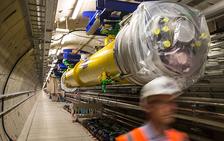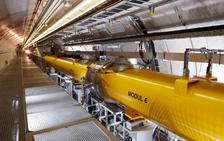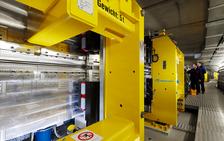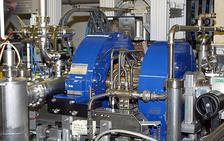General Information: Accelerators@DESY
ARD@DESY
Accelerator Research and Development (ARD) is a core mission of the lab. By further developing and inventing technologies to improve existing accelerator facilities and construct new ones, the ARD group gathers accelerator building expertise to stay at the leading edge of accelerator science.
Research topics at DESYs Accelerator R&D are:
- Improvements of existing accelerator flagship facilities, e.g. upgrades to DESYs synchrotron radiation facilities, seeding of free-electron lasers, atto- and femto-second electron and photon beams
- Super-conducting RF technology for future accelerators and its implementation in FLASH, the European XFEL and other modern high power accelerators
- Compact accelerator technology with high accelerating fields, e.g. plasma accelerators, dielectric structures, beam or laser drivers for accelerators, cost-efficient technologies
- New accelerator facilities for R&D, photon science and particle physics, e.g. future free-electron lasers (XFEL upgrades, PETRA IV), the SINBAD facility at DESY, future colliders (e.g. FCC at CERN)
More information: ARD@DESY
European XFEL
The European XFEL, which is being installed in underground tunnels, will be more than three kilometres long and stretch from the DESY site in Hamburg to the town of Schenefeld in the German federal state of Schleswig-Holstein, where the resarch campus with the large experimental hall will be located. The project is being conducted by Germany and 11 other countries, including Russia, France and Italy. DESY, the main shareholder, is working closely with European XFEL GmbH on the construction and operation of the facility. More information: European XFEL
FLASH
Since 2005, FLASH has been supplying high-intensity laser pulses consisting of “soft”, i.e. relatively long-wavelength, X-rays for research purposes. The 300-metre-long facility is not ring-shaped but completely straight. Its core component is a superconducting accelerator based on TESLA technology. This accelerator fires fast electrons through a special arrangement of magnets called an undulator, in which laser flashes are produced. This setup is known as a free-electron laser (FEL), and FLASH is the first FEL facility in the world to produce X-rays. More information: FLASH
PETRA III
DESY operates the new high brilliance 3rd Generation Synchrotron Radiation Source: PETRA III. Since 2010, PETRA III has been supplying X-ray radiation that is more powerful and tightly focused than anything produced by other storage rings worldwide. With a circumference of 2.3 km PETRA III is the biggest and most brilliant storage ring light source in the world. Since the end of 2012 all 14 beamlines are available for users. DESY is therefore further expanding the facility to include two new experimental halls with additional measuring stations. More information: PETRA III
REGAE
REGAE is a joint project of the CFEL partners Max Planck Society, University of Hamburg and DESY. The ten-metres-long facility generates ultrashort electron pulses of extremely high quality for time-resolved diffraction experiments on crystallised material samples, liquids and surfaces. Just as scientists direct light from storage rings or free-electron lasers onto material samples to determine their molecular structure by means of the generated diffraction patterns, such experiments are also possible with electrons. Because of the small penetration depth of electrons compared to X-rays, they are particularly suitable for nanomaterials. More information: REGAE
PITZ
DESY also operates a linear accelerator at its location in Zeuthen. The photoinjector test facility PITZ is used to develop and optimize electron sources for the X-ray lasers and particle accelerators of the future. At PITZ, the DESY researchers are developing and testing laser-driven radio freqency electron sources that produce particle beams of the required high quality. In addition to developing computer simulations and refining theoretical approaches, the scientists at PITZ are also investigating the processes involved in the generation, acceleration and shaping of the electron bunches. Their aim is to optimize the beam quality and operating parameters, such as the reliability, of the particle sources in order to meet the high requirements of the new facilities. More information: PITZ
DESY II
From 1987 on, the synchrotron DESYII has been the central machine within the accelerator complex at DESY to deliver electron or positron beams with high stability and reliability up to 7GeV to the user facilities. Today DESYII delivers electrons to PETRAIII and three detector test areas. More information: DESY II
DESY II Test Beam
Groups from all over the world use the DESY test beam. Prototypes of particle detectors of only one square millimetre and others weighing several hundreds of kilograms; components which will become the heart of a detector and others designed for the outer layers of future detectors. All these will be put to the acid test at DESY’s oldest accelerator. Under the fire of electrons and positrons of one to six Giga electron volts, the users may test properties like response behaviour and accuracy of their detector types – this is decisive for the future function in the experiment. More information: Test Beam












